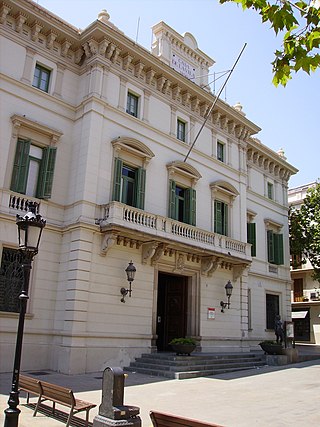Secondary education or post-primary education covers two phases on the International Standard Classification of Education scale. Level 2 or lower secondary education is considered the second and final phase of basic education, and level 3 upper secondary education or senior secondary education is the stage before tertiary education. Every country aims to provide basic education, but the systems and terminology remain unique to them. Secondary education typically takes place after six years of primary education and is followed by higher education, vocational education or employment. In most countries secondary education is compulsory, at least until the age of 16. Children typically enter the lower secondary phase around age 12. Compulsory education sometimes extends to age 20.

Matura or its translated terms is a Latin name for the secondary school exit exam or "maturity diploma" in various European countries centered around the former Austro-Hungarian Empire, including Albania, Austria, Bosnia and Herzegovina, Bulgaria, Croatia, Czech Republic, Hungary, Italy, Kosovo, Liechtenstein, Montenegro, North Macedonia, Poland, Serbia, Slovakia, Slovenia, Switzerland and Ukraine.

A secondary school or high school is an institution that provides secondary education and also usually includes the building where this takes place. Some secondary schools provide both lower secondary education and upper secondary education, i.e., both levels 2 and 3 of the ISCED scale, but these can also be provided in separate schools.
Sixth grade is the sixth year of formal or compulsory education. Students in sixth grade are usually 11-12 years old. It is commonly the first or second grade of middle school or the last grade of elementary school, and the sixth school year since kindergarten.
Education in Italy is compulsory from 6 to 16 years of age, and is divided into five stages: kindergarten, primary school, lower secondary school, upper secondary school and university (università). Education is free in Italy and free education is available to children of all nationalities who are residents in Italy. Italy has both a private and public education system.

Liceo scientifico is a type of secondary school in Italy. It is designed to give students the skills to progress to any university or higher educational institution. Students can attend the liceo scientifico after successfully completing middle school.

The liceo classico or ginnasio is the oldest, public secondary school type in Italy. Its educational curriculum spans over five years, when students are generally about 14 to 19 years of age.
Education in the Czech Republic includes elementary school, secondary school, and post-secondary school. For students ages two to five, there are preschools that are generally not state-funded until the year before elementary school. After preschool, parents are not charged for tuition, but they must provide, stationery, and food for their children. A number of private schools exist across the country, but these schools are largely financially inaccessible for most children. There is an ongoing national discussion regarding the introduction of tuition fees for university education.

Sarrià is a neighborhood in the Sarrià-Sant Gervasi district of Barcelona, Catalonia, Spain. Its main street is Major de Sarrià.
Due to the status of South Tyrol as an autonomous province within Italy, its school system is distinctly marked by a multi-lingual language politics. With regard to the acquisition of the respective second language of their pupils, schools in the area may differ considerably from one another depending on which linguistic group they are associated with.
Liceo linguistico is a type of secondary school in Italy. It is designed to give students the skills to progress to any university or higher educational institution. Students can attend the liceo linguistico after successfully completing middle school.
Liceo artistico is a type of secondary school in Italy. It is designed to give students the skills to progress to any university or higher educational institution, but specifically devoted to art related topics. Students can attend the liceo artistico after successfully completing scuola media.
Liceo delle scienze umane is a type of secondary school in Italy. It is designed to give students the skills to progress to any university or higher educational institution, but specifically devoted to human sciences related topics. Students can attend the liceo delle scienze umane after graduating from scuola media.
Liceo musicale e coreutico is a type of secondary school in Italy. It is specifically devoted to music and dance related topics. Students can attend the liceo musicale e coreutico after successfully completing scuola media.

Istituto tecnico economico is a type of secondary school in Italy specialized in business and economy. It gives students the skills to progress to any higher educational institution.

Istituto tecnico per attività sociali is a type of technical institute in Italy. After the Gelmini reform it has been merged with the technical economic institute.
Istituto Italiano Statale Comprensivo di Barcellona or the Istituto Italiano Statale Comprensivo "Edoardo Amaldi" is an Italian international school in Barcelona, Catalonia, Spain. Owned by the Italian government, it consists of three parts: Scuole secondarie "Edoardo Amaldi", Scuola primaria "Maria Montessori" and scuola dell'infanzia riconosciuta "Maria Montessori". The school administration and liceo occupy one campus, while all other classes are in a Sarrià facility.
Scuola Svizzera di Roma is an international school with an innovative, holistic pedagogy and leads to the Swiss Matura. In addition, permeability to the Italian education system is guaranteed from kindergarten to high school.
Education in San Marino is compulsory from 6 to 16 years of age, and is divided into six stages: nursery school, kindergarten, primary school, lower secondary school (scuola secondaria di primo g















